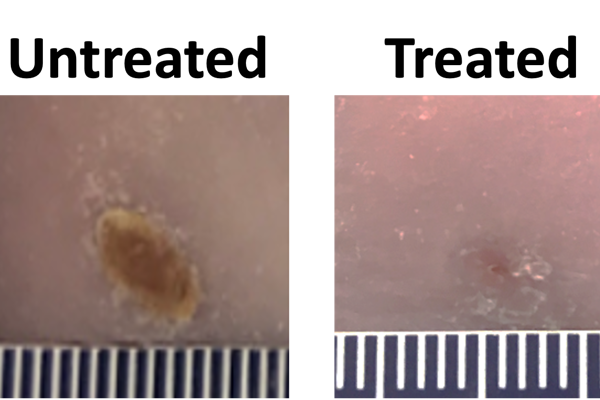Water-based gel to be tested as dressing for diabetic wounds
Jianjun Guan’s lab to optimize drug-delivery system in hydrogel

Chronic wounds in people with diabetes are the leading cause of nontraumatic lower limb amputation because existing treatments cannot overcome the obstacles to healing, such as chronic inflammation, abnormal skin cell functions and delayed growth of new blood vessels.
Jianjun Guan, professor of mechanical engineering & materials science in the McKelvey School of Engineering at Washington University in St. Louis, is developing a new wound dressing to overcome those obstacles and lead to faster wound healing in those with diabetes with a four-year, $1.8 million grant from the National Institutes of Health. The work builds on prior research published in Science Advances in 2021.
To overcome the obstacles, Guan and his team will control the transforming growth factor beta 1 (TGFß1)/p38 pathway using a new wound dressing.
The wound dressing is composed of a water-based hydrogel and a peptide-based TGFß receptor inhibitor. The dressing, which is liquid when applied to the wound and solid at body temperature, would gradually release the inhibitor to block the TGFß1/p38 pathway to decrease tissue inflammation and improve migration of healthy skin cells to the wound, which would lead to growth of new blood vessels. In addition, the hydrogel in the wound dressing would scavenge reactive oxygen species in the wounds, further decreasing inflammation.
In early experiments, Guan and his team found no difference in healing when the wound dressing was applied to wounds on normal mice. However, when they applied it to wounds on diabetic mice, they saw a big improvement. After applying a single dose of the wound dressing into wounds in young diabetic mice, the wounds completely closed at day 14. Wounds that were treated only with the hydrogel or were untreated were reduced to roughly half of their original size.
“We were surprised to find that the wound dressing worked only in high-glucose conditions, indicating that the wound dressing has different mechanism of action in the diabetic and non-diabetic wounds,” he said.
Going forward, Guan and his team will test the gel on aged mice that are the equivalent of a 65-year-old human.
“For wound healing, skin cells have to migrate from the healthy part of the skin to the wound, and aging can delay the migration process,” he said. “We hypothesize that the wound dressing will lead to accelerated healing in the older mice as well as the young mice.”
Liang Ma, associate professor of dermatology, and Mohamed Zayed, MD, PhD, associate professor of surgery and of radiology, both at Washington University School of Medicine, are co-investigators of this project.




